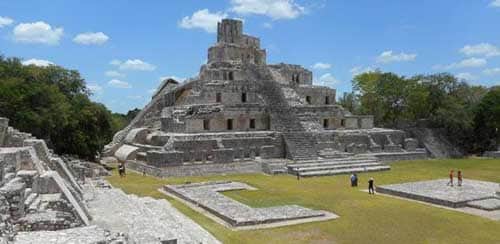WASHINGTON — Eight artifacts that were illegally exported from Guatemala in two separate incidents were officially returned to the country at a repatriation ceremony Friday at the Guatemalan Embassy in Washington.
Officials from U.S. Immigration and Customs Enforcement (ICE) and U.S. Customs and Border Protection (CBP) repatriated the eight Maya culture ceramic artifacts, circa 600 to 900 A.D., to Guatemala’s Minister of Foreign Affairs, Harold Caballeros.
The artifacts were seized following a 2011 investigation conducted by ICE’s Homeland Security Investigations (HSI) Boston and a 2009 inspection by U.S. Customs and Border Protection in Houston.
“The antiquities we are returning are cultural treasures that belong to the people of Guatemala,” said ICE Director John Morton. “This repatriation is another example of the exceptional investigative work HSI is doing to stop the pilfering and illicit trading of precious art and antiquities from around the world.”
“Through the facilitation and enforcement of U.S. trade laws, these artifacts will provide the people of Guatemala a key to their past,” said Customs and Border Protection Assistant Commissioner for International Affairs Charles E. Stallworth II. “Customs and Border Protection is pleased to work in partnership with Immigration and Customs Enforcement to enforce U.S. customs law and to return priceless artifacts to their lawful owner.”
The ICE case began in January 2011, when the Guatemalan Ministry of Culture contacted HSI to request investigative assistance pertaining to objects at an auction house. The ministry had identified several antiquities at the Skinner Auction House in Marlborough, Mass., that they believed were the cultural property of the people of Guatemala. HSI also received leads from Interpol and the Department of Justice regarding a pending sale of the objects at the auction house.
On Feb. 4, 2011, HSI special agents served a summons requiring the auction house to turn over copies of all documents concerning four objects in question and to produce the objects for examination. Upon examination of the documents, HSI special agents discovered that there was no paperwork documenting the lawful importation into the United States or lawful exportation of the objects from Guatemala.
On Feb. 15, 2011, Dr. Charles Golden of the anthropology department at Brandeis University in Boston determined that, of four suspect artifacts, two Maya pre-Columbian ceramic pottery cylinders were genuine articles of antiquity of Maya origin from Guatemala.
HSI’s investigation concluded that the two antiquities were removed from Guatemala in violation of Guatemalan law and brought into the United States in violation of U.S. customs laws and regulations. Specifically, the objects had been removed in violation of a bilateral agreement coordinated by the U.S. State Department, enacted in 1997, between the United States and Guatemala prohibiting the importation of pre-Columbian artifacts into the United States without proper export documents. HSI special agents seized the objects on June 16, 2011, and on Oct. 6, 2011 administrative forfeiture proceedings were officially concluded.
The CBP case began on Aug. 30, 2009, when a passenger arrived at Houston Intercontinental Airport from Guatemala with six artifacts that were declared as figurines. The person declaring them stated he had toured Maya ruins in Guatemala and purchased the artifacts. He explained that the local people in the villages were selling the artifacts to tourists and was told by his tour guide that they were legal to purchase. The passenger abandoned the artifacts which were seized by CBP.
HSI plays a leading role in criminal investigations that involve the illicit importation and distribution of cultural property, as well as the illegal trafficking of artwork. The agency specializes in recovering works that have been reported lost or stolen. The HSI Office of International Affairs, through its 71 attaché offices in 47 countries, works closely with foreign governments to conduct joint investigations, when possible.
HSI specially trained investigators, assigned to both domestic and international offices, partner with governments, agencies and experts to protect cultural antiquities. They also train investigators from other nations and agencies on investigating crimes involving stolen property and art, and how to best enforce the law to recover these items when they emerge in the marketplace.
Those involved in the illicit trafficking of cultural property, art and antiquities can face prison terms of up to 20 years, fines and possible restitution to purchasers of the items.
Since 2007, HSI has returned more than 2,500 artifacts to 23 countries including paintings from France, Germany and Austria, an 18th century manuscript from Italy, as well as cultural artifacts from China, Cambodia and Iraq. Learn more about ICE HSI cultural property, art and antiquities investigations.
Source:ICE




